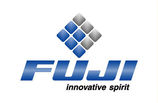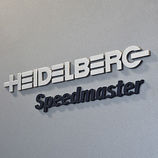Online support HOTLINE: 84-2439437063
|
NANOGRAPHIC PRINTING TECHNOLOGY(23/12/2017)
Demand for digital printing continues to grow, and technology manufacturers are turning their eyes increasingly towards the burgeoning market for package printing. NarrowWebTech editor Nick Coombes spoke exclusively with Gilad Tzori, Vice President of Product Strategy at Landa Digital Printing, about the latest developments in nanographic printing technology.
For those unfamiliar with nanographic printing, please summarise the technology and explain how it works. Gilad Tzori: The nanographic printing process is based on Landa NanoInk, a water-based ink with nano-pigments that measure tens of nanometres in diameter. The process starts with the ejection of billions of ink droplets onto a heated conveyor blanket. Each row of ink ejectors adds a different colorant (CMYK or CMYKOVG).
As the water evaporates, the droplets flatten and blend to create an ultra-thin, dry polymeric film. The 500 nm thick colour image, the thinnest of any printing process, is then transferred from the blanket onto the substrate, forming an abrasion resistant, laminated layer that matches the gloss of the paper and produces exceptionally round dots with super sharp edges and high gloss fidelity to the substrate. Unlike inks in other printing processes, the Landa NanoInk droplets used in the nanographic printing process do not penetrate beneath the substrate surface. As a result, they create an extremely sharp and vivid colour image on paper, plastics or packaging films. With no pre-treatment or post drying requirements, the printed output can be immediately processed right off the press.
According to Mr. Gilad Tzori, VP Product Strategy at Landa Digital Printing, the nanographic printing process is based on Landa NanoInk, a water-based ink with nano-pigments that measure tens of nanometres in diameter. The process starts with the ejection of billions of ink droplets onto a heated conveyor blanket. Each row of ink ejectors adds a different colorant (CMYK or CMYKOVG). As the water evaporates, the droplets flatten and blend to create an ultra-thin, dry polymeric film. The 500 nm thick colour image, the thinnest of any printing process, is then transferred from the blanket onto the substrate, forming an abrasion resistant, laminated layer that matches the gloss of the paper and produces exceptionally round dots with super sharp edges and high gloss fidelity to the substrate. Unlike inks in other printing processes, the Landa NanoInk droplets used in the nanographic printing process do not penetrate beneath the substrate surface. As a result, they create an extremely sharp and vivid colour image on paper, plastics or packaging films. With no pre-treatment or post drying requirements, the printed output can be immediately processed right off the press.
Futhermore, The nanographic printing process has a number of fundamental advantages over existing printing technologies. First, is the use of nano-pigments, which are excellent light absorbers that enables a colour gamut that is 15% wider than alternative technologies. Second, the brilliant colours provided by the use of nano-pigments enables Nanography to create images that are 2-10 times thinner than other processes, and use significantly less expensive pigments. Third, the ink is dried and formed before it is transferred to the substrate, enabling Nanography to print on any off-the-shelf substrate, and with very high ink coverage without causing cockling or other issues. Finally, another advantage of the dry transfer is that sharpness and colour accuracy is practically unaffected by the substrate.
Additionally, the nanographic printing process offers the capacity to yield the lowest cost-per-page of all the digital printing technologies as a result of combining Landa NanoInk, Nanography process, and the productivity of our nanographic printing presses. Landa NanoInk images absorb light more efficiently than conventional images and are laminated onto the substrate without penetrating it. That enables such images to be only about 500nm thick. Thinner images use less material to produce – which means lower cost. The Nanography process uses water, but unlike water based inkjet, it does not require expensive special papers or special coatings. Unlike other digital processes such as Electrophotography, it prints on any ordinary paper without priming or pre-treatment. The Landa S10 Nanographic printing presses are up to five times more productive than other digital presses since they print large format, B1 sheets (1050 mm/41”) at 6500 sheets/hour while other digital presses use B2 sheets (736 mm/29”) or smaller, and print at a much slower speed.
(Gilad Tzori, 2014) NarrowWebTech editor Nick Coombes spoke exclusively with Gilad Tzori, Vice President of Product Strategy at Landa Digital Printing.
Other news
|
HTML Code









